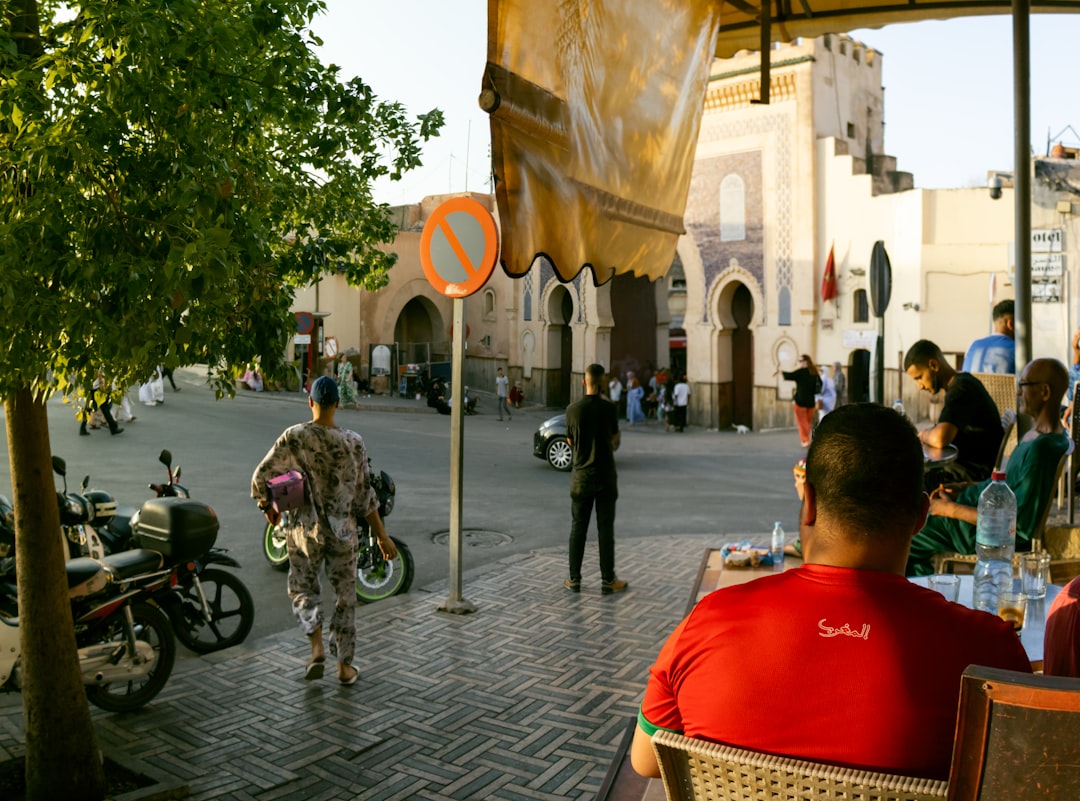

Engage prospects with a scan and streamline customer engagement with FREE QR code marketing tools by Sona – no strings attached!
Create a Free QR CodeFree consultation

No commitment

Engage prospects with a scan and streamline customer engagement with FREE QR code marketing tools by Sona – no strings attached!
Create a Free QR CodeFree consultation

No commitment
In today’s digitally driven world, QR codes have evolved from a novelty to a strategic powerhouse in bridging offline engagement with online action. For tour operators, the gap between physical touchpoints and digital conversion has often meant lost leads, anonymous interest, and limited attribution. QR codes solve this by turning every brochure, sign, vehicle wrap, or handout into a trackable gateway that moves travelers from curiosity to commitment with a single scan.
As travel audiences become increasingly connected, QR codes empower tour operators to engage at every stage of the customer journey. From awareness at airports to consideration at hotel desks and conversion on a bus seatback, each scan reveals intent and fuels follow-up. Rather than relying on guesswork, operators gain a data-rich view of who is engaging, what they want, and how to convert them faster.
This guide explains how to plan, deploy, and optimize QR campaigns that turn spontaneous interest into measurable revenue. You will find practical placement recommendations, formats that work best in tourism, analytics that tie scans to bookings, and advanced strategies for audience building and retargeting. Use it to replace disconnected offline marketing with a connected, high-ROI growth engine.

Tour operators often grapple with the loss of promising leads who show interest, perhaps by browsing a brochure or pausing at a kiosk, but fail to take the next step because there is no clear or easy path from offline discovery to online engagement. QR codes bridge this gap between physical assets and digital actions. When placed strategically, they capture high-intent moments and route travelers to booking pages, itineraries, reviews, or chat support in seconds.
Success requires more than printing a code and hoping for the best. You need clear objectives, thoughtful design, purposeful placement, and strong analytics. Used correctly, QR codes improve conversion rates, streamline operations, and reduce the manual processes that slow teams down. They also reveal which touchpoints actually drive bookings so you can redeploy budget toward what works.
Modern platforms like Sona QR support this workflow end to end: generating dynamic codes, updating destinations without reprinting, integrating with CRM, and automating follow-ups. With this foundation, even small teams can turn offline attention into measurable revenue without adding headcount or workflow complexity.

Tour operators face persistent challenges in tracing which travelers are genuinely interested as opposed to those who engage casually and disappear. The inability to attribute offline touchpoints or retarget anonymous visitors often results in missed sales and wasted spend. QR codes address these realities by connecting offline exposure to digital behavior, while enabling real-time optimization.
Consider the materials and moments common in tourism: printed itineraries, window decals, airport signage, brochures in hotel racks, and bus stop posters. Historically, none of these provided engagement data or a direct path to action. With QR codes, each becomes a measurable entry point that can be updated, personalized by location, and stitched into your CRM.
By modernizing the collection and attribution of customer intent, QR codes move your marketing from guesswork to evidence. The payoff is better budget allocation, fewer missed opportunities, and a smoother traveler experience across the journey.

QR codes are flexible. You can deploy several formats to meet distinct goals across awareness, consideration, and conversion stages. Choosing the right format and destination increases completion rates and the quality of data you collect.
For tour operators, the most effective formats are those that shorten the path to booking, simplify communication, and enrich post-tour engagement. Focus on mobile-first destinations that load quickly and require minimal typing.
Dynamic QR codes are ideal for campaigns, rotating offers, and any scenario where you want analytics and future flexibility. Static codes are fine for evergreen contact details or permanent information that will not change. Sona QR supports both, along with centralized management so you can update destinations and maintain clean attribution without reprinting.

Despite visible marketing investments, many operators miss critical interactions at peak engagement points: when travelers are planning their day, waiting in transit, or arriving at attractions. The common thread is lack of trackable touchpoints. Deploy QR codes where prospects already encounter your brand to convert passive interest into active demand.
Walk the traveler’s path and ask: where are eyes lingering and decisions forming? Those locations are your highest-leverage placements. Prioritize high-traffic areas, partner venues, and any point where staff often repeats the same information.
Strategic QR deployment helps operators overcome poor attribution and transforms high-traffic but unmeasured locations into growth drivers. With careful placements, even small creative changes can unlock significant incremental bookings at low cost.
Tour operators can apply QR codes across the traveler lifecycle to accelerate conversions, improve satisfaction, and gather richer data. Start with high-impact moments where scanners already show intent and where your team faces repeated questions or manual processes.
As you implement, define measurable outcomes by use case. For example, aim for a 20 to 40 percent lift in post-tour reviews, a 10 to 25 percent improvement in form completion rates, and higher mobile booking conversion compared to direct typing. Tie each code to a tagged landing page so you can attribute results by placement and message.
It is common for tour operators to lose track of strong prospects who browse options but never complete a booking. Each QR scan can be a behavioral signal that fuels segmentation and retargeting. With multiple codes across touchpoints, you can automatically build audiences based on real intent and context.
Segmentation is most powerful when it aligns with journey stage, content interest, and scanning environment. This structure allows you to trigger the right message at the right time and channel. Over time, these segments become one of your most valuable assets for seasonal promotions, partner offers, and upsell flows.
With Sona QR, each QR code becomes a smart entry point that captures scan metadata and pushes it into your systems automatically. The result is precise retargeting based on real behavior, not assumptions, which consistently lowers cost per acquisition and increases conversion rate.
Disconnected channels are a common frustration in tourism. Offline interest seldom translates seamlessly into digital journeys, which means operators often miss out on nurturing and converting travelers who were ready to engage. QR codes serve as the connective tissue that ties print, events, and out-of-home to your website, CRM, and ad platforms.
To unlock their full value, pair QR codes with mobile-first destinations and build automated flows that continue the conversation after the first scan. Use dedicated codes for each channel to measure relative impact and double down on what works.
QR codes become the offline onramp to your digital engine. With a centralized platform like Sona QR, you can manage all codes, monitor performance, and sync scan data with CRM and ad platforms so that every channel becomes measurable and responsive.
Launching a QR initiative is straightforward when you follow a repeatable process. This checklist streamlines planning, improves execution quality, and ensures your team captures the data needed for optimization and attribution.
Use the steps below to align goals, select formats, design for scannability, deploy in the highest-impact locations, and measure outcomes. Train frontline staff to promote the scan and explain the benefit so travelers know exactly what they gain by engaging.
Advanced tools automate tracking and segmentation so you can focus on creative and partnerships. A disciplined approach transforms QR from a novelty into a repeatable growth channel that compounds over time.
One of the persistent frustrations for tour operators is the disconnect between marketing efforts and measurable revenue impact. Scan counts alone do not tell you which touchpoints led to a booking, upgrade, or repeat visit. Modern analytics and integrations solve this by linking scans to sessions, conversions, and customer records so you can attribute revenue confidently.
Start by standardizing how you tag and route scan traffic. Use consistent UTM naming, build dashboards that compare placements, and set alerting for scan surges so you can respond in the moment. Then connect the dots in your CRM to understand who scanned, what they did next, and how to retarget effectively.
With Sona QR for capture and Sona.com for identity resolution and multi-touch attribution, operators can finally see the full journey from scan to sale. This visibility enables smarter investments, more relevant experiences, and continuous optimization at the pace of traveler demand.
Many operators adopt QR codes but leave performance on the table by using one-size-fits-all deployment. The most successful teams treat each placement as a hypothesis. They test CTAs, iterate creative, and automate follow-ups so no moment of interest goes to waste.
Plan your QR code program like a media channel, not a one-off print exercise. Build a naming convention, schedule reviews, and set quarterly experiments. Encourage guides and concierge partners to promote the scan with a quick script that tells travelers what they will receive.
These practices compound. Over time you will build rich audience segments, a library of proven placements, and a machine for converting real-world attention into digital revenue with minimal waste.

QR codes perform best when they remove friction and meet travelers where decisions happen. The following examples illustrate how simple deployments can generate outsized results, especially when paired with incentives and clear measurement.
Explore more examples for inspiration from travel brands using QR codes effectively.
As traveler expectations rise for personalized and sustainable experiences, QR infrastructure becomes a strategic advantage. Dynamic codes plus strong data practices let operators adapt in real time, curb waste from reprints, and deploy offers based on behavior rather than assumptions.
Looking forward, operators will combine QR signals with first-party analytics, loyalty data, and on-tour engagement to predict intent and automate timely outreach. AI-driven content delivery can personalize itineraries, translate on the fly, and present add-ons that match interests inferred from scan patterns.
By embedding QR campaigns into multichannel CRM journeys and modern analytics, forward-thinking operators turn fragmented touchpoints into a cohesive growth system. The result is a measurable, adaptive program that keeps pace with shifting traveler demand.
QR codes are rapidly becoming an essential strategy for tour operators seeking to turn every flyer, brochure, and sign into a digital entry point and every traveler’s moment of interest into measurable action. By directly addressing pain points such as anonymous visitor loss, untracked high-intent leads, and incomplete data, QR codes empower tour businesses to deliver seamless customer journeys, personalize offers, and attribute bookings to previously inaccessible sources. The operational upside is significant: fewer reprints, faster updates, and a lighter environmental footprint.
With the right QR platform, tour operators can engage explorers precisely when they demonstrate interest, nurture them using data-driven segmentation, and convert that interest into bookings, upgrades, or reviews, all while supporting sustainable tourism. Sona QR helps you generate, manage, and track codes at scale, then connect offline engagement to CRM records and revenue insights through Sona. Start creating QR codes for free: Start creating QR codes for free.
QR codes have transformed the tour operator industry from static brochures and flyers into dynamic, measurable growth channels. Whether it’s driving customer acquisition, enhancing traveler experiences, or enabling seamless booking and itinerary updates, QR codes replace outdated processes with instant, mobile-friendly actions that capture real-time engagement data—turning every touchpoint into a powerful conversion driver. Imagine knowing exactly which marketing efforts lead to bookings and being able to optimize campaigns instantly based on live feedback.
With Sona QR, you can create dynamic, trackable QR codes in seconds, update your travel campaigns without costly reprints, and connect every scan directly to revenue. No missed leads, no guesswork—just smarter, more profitable tours and unforgettable customer journeys. Start for free with Sona QR today and turn every scan into a new adventure booked.
QR codes improve customer experience by providing fast, easy access to booking pages, itineraries, reviews, and support, reducing friction and enabling seamless transitions from offline interest to online action.
QR codes offer benefits including bridging offline to online engagement, capturing high-intent traveler data, enabling dynamic content updates, improving attribution and ROI, reducing paper waste, and lowering operational costs.
QR codes streamline operations by digitizing analog assets, reducing manual processes, providing real-time analytics on engagement and conversions, automating follow-ups, and allowing quick updates without reprinting materials.
Creative uses include placing QR codes on tour vehicles, event flyers, partner hotels, digital screens, reusable water bottles for eco-tours, rental cars for audio tours, and at landmarks to provide multilingual guides and safety tips.
QR codes reduce environmental impact by minimizing the need for paper reprints through dynamic content updates, lowering paper waste, and enabling sustainable operations with remote schedule and policy changes.
Use Sona QR's trackable codes to improve customer acquisition and engagement today.
Create Your FREE Trackable QR Code in SecondsJoin results-focused teams combining Sona Platform automation with advanced Google Ads strategies to scale lead generation

Connect your existing CRM

Free Account Enrichment

No setup fees
No commitment required

Free consultation

Get a custom Google Ads roadmap for your business






Launch campaigns that generate qualified leads in 30 days or less.
